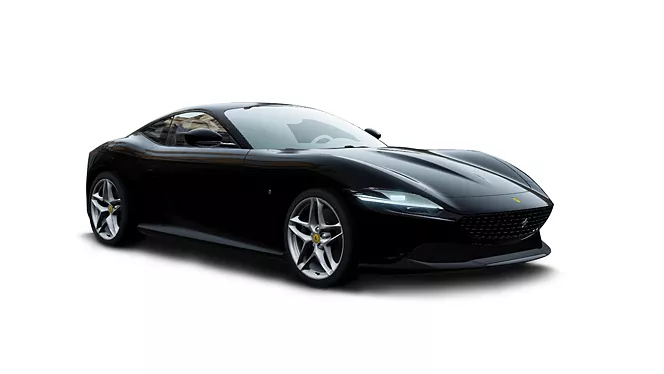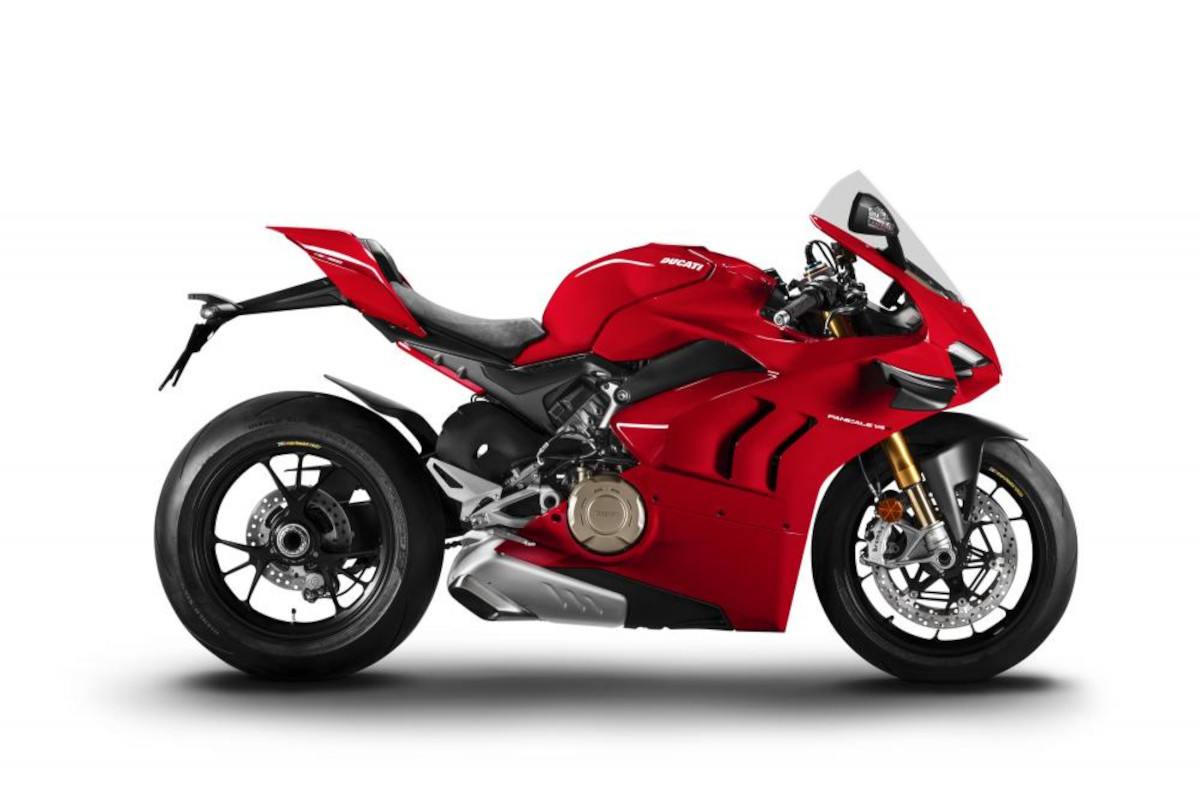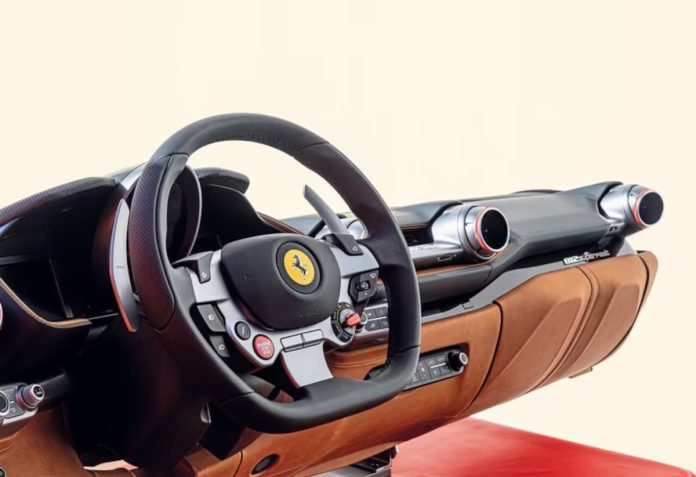Ferrari, the iconic Italian automaker known for its luxury sports cars, is making a significant shift in its in-car technology strategy. In a bold move, Ferrari has decided to remove its traditional satellite navigation systems from future models, including the much-anticipated Purosangue and 12Cilindri. This decision is a direct response to the growing reliance on smartphones for navigation and other functionalities.
The Evolution of In-Car Navigation Systems
In-car navigation systems have been a staple in luxury vehicles for decades. These systems were once considered a high-tech feature, providing drivers with turn-by-turn directions and other useful information. However, as technology has evolved, so too have the expectations of consumers. Today, nearly everyone owns a smartphone, and these devices have become the go-to tool for navigation.
Why Ferrari is Ditching Traditional Navigation Systems
Emanuele Carando, Ferrari’s head of product marketing, explained the rationale behind this decision. According to Carando, smartphone mirroring is “the most user-friendly possibility” and the most up-to-date solution available. This makes dedicated in-car navigation systems redundant and obsolete. Ferrari owners, he noted, typically do not use their vehicles for everyday commuting, so the need for a specific in-car navigation system is minimal.

The Rise of Smartphone Mirroring: Apple CarPlay and Android Auto
Apple CarPlay and Android Auto have revolutionized the way drivers interact with their vehicles. These platforms allow users to connect their smartphones to their car’s infotainment system, providing access to navigation, music, calls, and messages. Launched about a decade ago, both Apple CarPlay and Android Auto have become must-have features in modern cars, offering seamless integration and a familiar user interface.
Ferrari’s Customer-Centric Approach
Ferrari’s decision to embrace smartphone mirroring reflects a customer-centric approach. By leveraging technologies that customers are already familiar with and prefer, Ferrari aims to enhance the overall user experience. This move aligns with the broader trend in the automotive industry, where user experience is increasingly prioritized over proprietary systems.
The Controversy Surrounding General Motors’ Decision
In contrast to Ferrari’s approach, General Motors (GM) recently announced that it would drop support for Apple CarPlay and Android Auto in favor of its in-house software. This decision sparked a swift and vocal backlash from consumers who have come to rely on these platforms for their daily driving needs. GM’s move highlights the challenges automakers face in balancing technological innovation with customer preferences.
The Practical Benefits of Smartphone Navigation
There are several practical benefits to using smartphone navigation over traditional in-car systems. Firstly, smartphones are constantly updated with the latest maps and traffic information, ensuring drivers always have the most accurate data. Additionally, smartphone navigation apps, such as Google Maps and Waze, offer a range of features that enhance the driving experience, including real-time traffic alerts, alternative routes, and points of interest.
Enhancing User Experience with Familiar Technology
By removing traditional navigation systems and focusing on smartphone mirroring, Ferrari is simplifying the user experience. Drivers no longer need to learn a new interface or deal with outdated maps. Instead, they can use the navigation apps they are already comfortable with, directly from their smartphone. This seamless integration ensures a more intuitive and efficient driving experience.
The Impact on Ferrari’s Brand and Market Position
Ferrari’s decision to prioritize smartphone mirroring over traditional navigation systems is likely to strengthen its brand and market position. The company is demonstrating its commitment to innovation and customer satisfaction, which are key factors in maintaining its reputation as a leading luxury automaker. By aligning its technology strategy with consumer preferences, Ferrari is poised to attract a new generation of tech-savvy drivers.
Future Prospects: What to Expect from Ferrari
Looking ahead, Ferrari’s focus on smartphone integration could lead to further innovations in its infotainment systems. As technology continues to advance, we can expect Ferrari to explore new ways to enhance the driving experience through connectivity and digital features. This may include advanced driver assistance systems, enhanced multimedia capabilities, and more personalized user interfaces.
Conclusion: A Strategic Move for the Modern Driver
In conclusion, Ferrari’s decision to remove traditional navigation systems and embrace smartphone mirroring is a strategic move that aligns with the evolving needs of modern drivers. By prioritizing user-friendly technology and customer preferences, Ferrari is setting a new standard for luxury vehicles. This approach not only enhances the driving experience but also reinforces Ferrari’s position as a forward-thinking and customer-centric brand.
The Future of In-Car Technology
As Ferrari continues to innovate, the future of in-car technology looks promising. The integration of smartphones and other digital devices will likely play a significant role in shaping the driving experience. Here are some potential developments we can expect to see in the coming years:
Advanced Driver Assistance Systems (ADAS)
Advanced Driver Assistance Systems (ADAS) are already making waves in the automotive industry. These systems use a combination of sensors, cameras, and artificial intelligence to assist drivers with tasks such as lane keeping, adaptive cruise control, and automatic emergency braking. Ferrari’s focus on connectivity could pave the way for more sophisticated ADAS features, enhancing both safety and convenience.
Enhanced Multimedia Capabilities
With the rise of streaming services and digital content, the demand for enhanced multimedia capabilities in cars is growing. Ferrari could leverage smartphone integration to offer a more immersive entertainment experience. This might include high-quality audio systems, access to streaming platforms, and even augmented reality (AR) displays that provide real-time information about the surroundings.
Personalized User Interfaces
Personalization is becoming increasingly important in the automotive industry. Drivers want their vehicles to reflect their preferences and needs. Ferrari’s focus on smartphone mirroring could lead to more personalized user interfaces, where drivers can customize the layout, choose their favorite apps, and receive tailored recommendations based on their driving habits.
Over-the-Air (OTA) Updates
Over-the-air (OTA) updates allow automakers to remotely update the software in their vehicles, providing new features and improvements without the need for a visit to the dealership. Ferrari could utilize OTA updates to continuously enhance the functionality of its infotainment systems, ensuring that drivers always have access to the latest technology.
Enhanced Connectivity and Integration
The future of in-car technology will likely see even greater connectivity and integration between vehicles and digital devices. This could include seamless handoffs between different devices, such as transitioning from a navigation app on a smartphone to the car’s display without interruption. Additionally, we might see deeper integration with smart home systems, allowing drivers to control home devices directly from their car.
Embracing Change: Ferrari’s Commitment to Innovation
Ferrari’s decision to move away from traditional navigation systems is a testament to its commitment to innovation and customer satisfaction. By embracing change and prioritizing user-friendly technology, Ferrari is setting a new standard for luxury vehicles. This approach not only enhances the driving experience but also positions Ferrari as a leader in the automotive industry.
A Customer-Centric Philosophy
At the heart of Ferrari’s decision is a customer-centric philosophy. The company understands that its customers value convenience, familiarity, and reliability. By integrating smartphone mirroring into its vehicles, Ferrari is addressing these needs and ensuring that drivers have access to the best possible navigation and connectivity solutions.
Responding to Market Trends
Ferrari’s move also reflects broader market trends. As smartphones become increasingly integral to our daily lives, the demand for seamless integration between devices and vehicles is growing. By responding to these trends, Ferrari is staying ahead of the curve and ensuring that its vehicles remain relevant and appealing to modern drivers.
The Competitive Landscape
In a competitive automotive market, staying ahead of technological advancements is crucial. Ferrari’s decision to embrace smartphone mirroring sets it apart from competitors who may still rely on outdated navigation systems. This forward-thinking approach not only attracts tech-savvy consumers but also reinforces Ferrari’s reputation as an innovative and customer-focused brand.
Conclusion: Ferrari’s Forward-Thinking Approach
Ferrari’s decision to eliminate traditional navigation systems in favor of smartphone mirroring is a forward-thinking approach that aligns with the evolving needs of modern drivers. By prioritizing user-friendly technology and customer preferences, Ferrari is enhancing the driving experience and setting a new standard for luxury vehicles.
As the automotive industry continues to evolve, Ferrari’s commitment to innovation and customer satisfaction will likely lead to further advancements in in-car technology. From advanced driver assistance systems to enhanced multimedia capabilities, the future of Ferrari vehicles looks promising and exciting.
In summary, Ferrari is not just adapting to change but actively driving it. By embracing smartphone navigation and connectivity, Ferrari is demonstrating its dedication to providing the best possible experience for its customers. This strategic move is a testament to Ferrari’s ability to innovate and remain a leader in the luxury automotive market.































